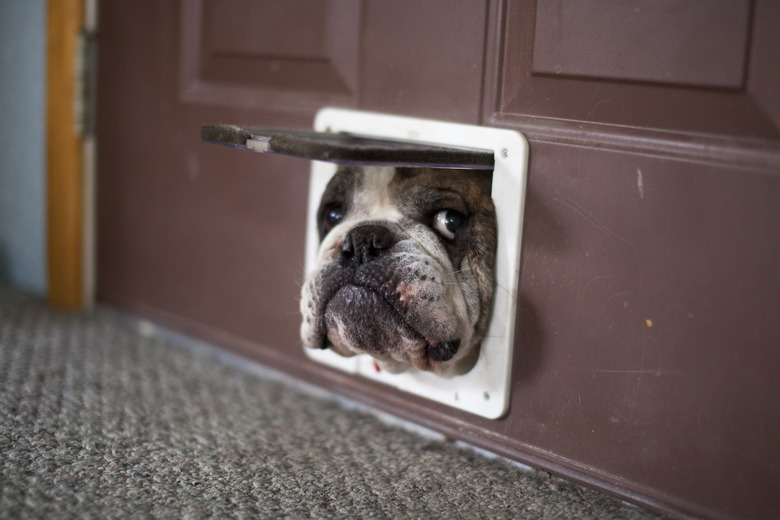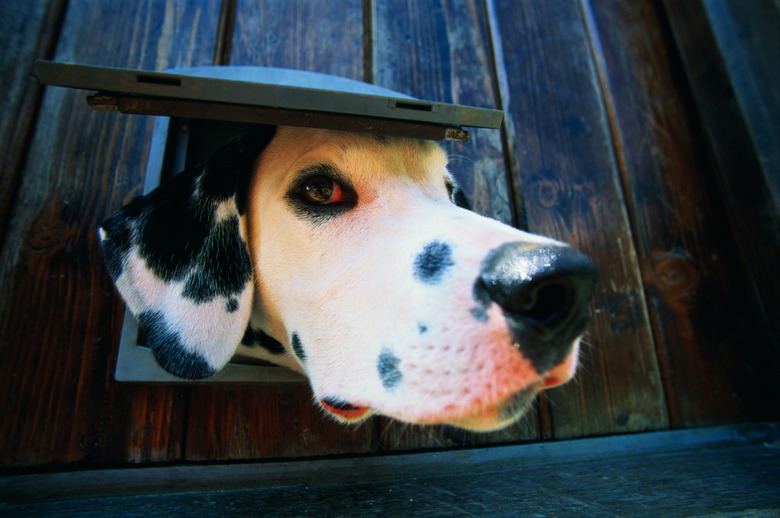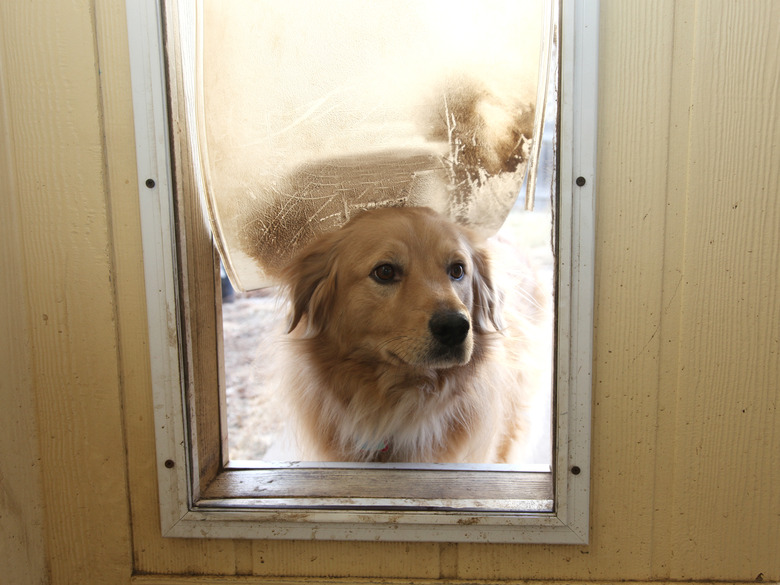How To Make A Doggie Door Burglarproof
Pet doors allowing dogs to move between the indoors and outdoors easily can be handy, especially when we are gone for hours and know that getting outdoors might be necessary and healthy for our pets. However, selecting and installing one isn't straightforward. Three things you'll likely need are a deadbolt lock, a sturdy dog door, or a dog door with a security panel if you're concerned about intruders.
Securing a dog door
Securing a dog door
Even if you have a small or medium-sized dog, you need to make your pet door secure. Experts say that some burglars might enlist the help of a preteen child to slip through the dog door and unlock the front or back door for easy adult access.
If your doggie door is big enough to allow an extra-large breed, such as a St. Bernard, Labrador retriever, or Great Dane, easy access to both the house and the yard, chances are that it's big enough for a human to crawl through. There are some humans who would happily crawl into your doggie door and crawl out again with your laptop, the silver, and any credit cards you might have left lying around.
There are many ways to burglarproof your large dog door. Surprisingly, the best solution might not be the most obvious.
Electronic dog doors
Electronic dog doors
Don't switch to an electronic door. An electronic dog door requires your pet to wear a transmitter on her collar that communicates with a receiver at the door, ensuring the door will only open to an animal wearing the transmitter. This type of dog door is ideal for people who have a cat they'd like to keep inside and/or raccoons in the neighborhood they'd like to keep outside.
Since they're designed to deter beings weighing less than 40 pounds, electronic dog doors are made of one layer of plastic. As sturdy as this plastic door may seem, it will not last long against a determined human intruder with a hammer or a box knife.
Doggie door lock
Doggie door lock
If you are concerned about leaving a dog door open while on vacation — or when you are leaving your home for several days — an old fashion door lock is your best option. Many dog door openings are big enough to allow people through, so add a deadbolt lock to the inside of the dog door. When you leave (with your dog, of course) simply lock the dog door as you would your front door.
Many security consultants suggest that a dog is already an excellent burglar deterrent device, especially one that barks at the sight of a stranger. However, deterrence is where the effectiveness often ends. Few dogs can stop a robber, and some are injured by the intruder or retreat in fear after barking.
Pet door security features
Pet door security features
Consider installing a door with security features. Many models of pet doors come with locking features or metal security panels or are designed to just barely flap open enough to let your pet in or out, and a bulkier human may not fit. These doors may cost $200 or more, but they are definitely burglar deterrents.
Beware of dog sign
Beware of dog sign
Add other security features. Even if your dog is the sweetest boy in the world who has never met a stranger, consider putting a "beware of dog" sign in your window. Some burglars won't go anywhere they might be bitten. However, if your dog is actually aggressive, a "beware of dog" sign likely does not protect you from legal action if your dog does injure someone.
Remove the dog door
Remove the dog door
You can choose to eliminate the doggie door entirely. If you still aren't comfortable with the security or lack thereof in your dog door, consider removing it or replacing your door with an intact door and teaching your dog to let you know when he wants to go out or come in. After all, if there's not a dog door for a burglar to crawl through, your house is that much more secure.


